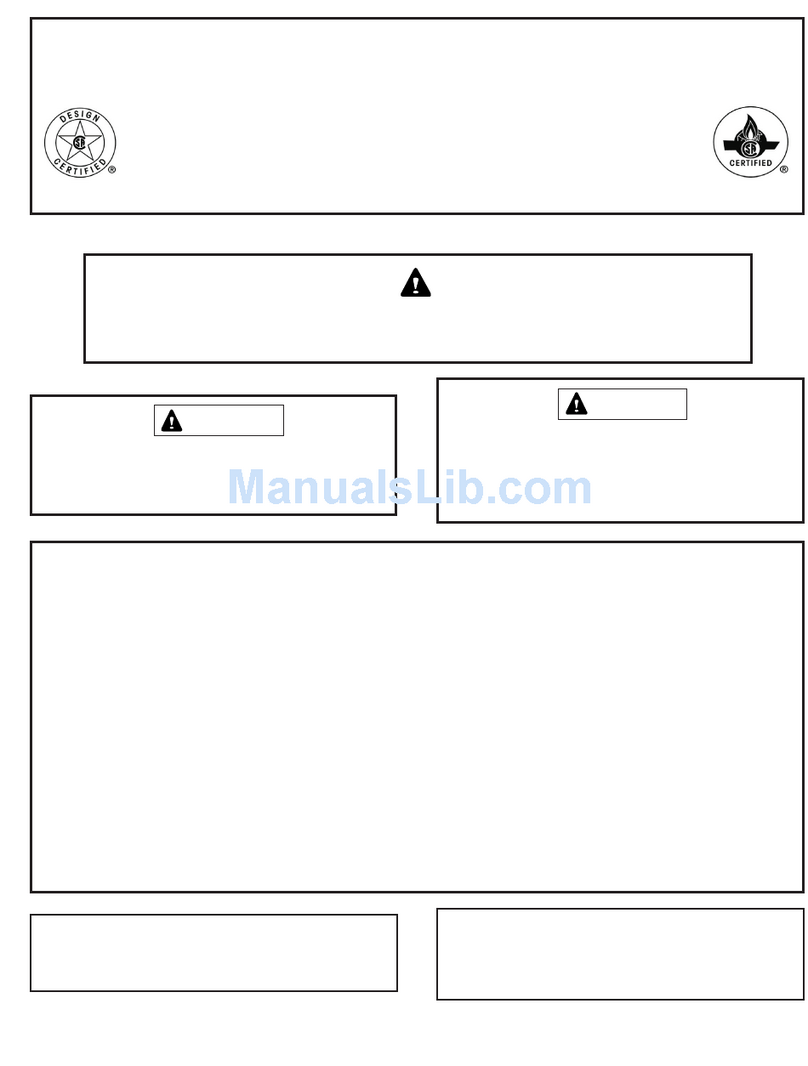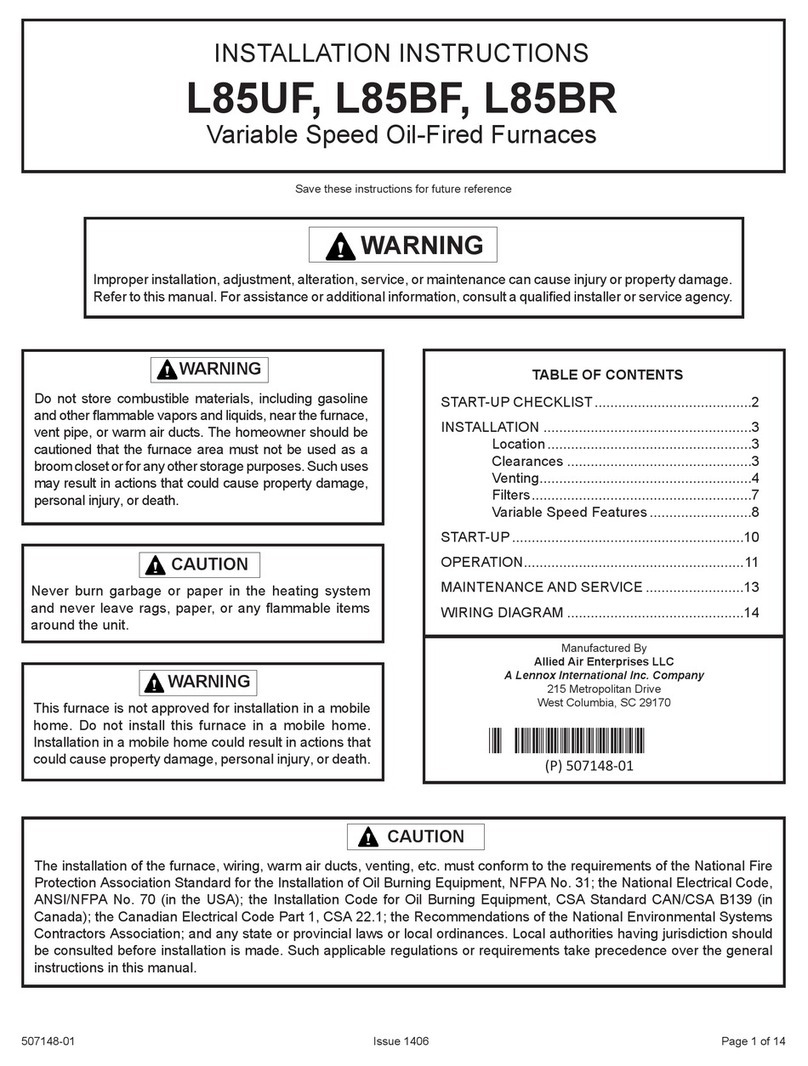
507206-01Page 6 of 59 Issue 1337
• Air lters must be replaced upon construction completion.
•The input rate and temperature rise must be set per the
furnace rating plate.
•One hundred percent (100%) outdoor air must be provided
for combustion air requirements during construction.
Temporary ducting may supply outdoor air to the furnace.
Do not connect duct directly to the furnace. Size the
temporary duct following the instructions in section for
Combustion, Dilution and Ventilation Air in a conned
space with air from outside.
• The furnace heat exchanger, components, duct system,
air lters and evaporator coils must be thoroughly
cleaned following nal construction cleanup.
•All furnace operating conditions (including ignition, input
rate, temperature rise and venting) must be veried
according to these installation instructions.
General
These instructions are intended as a general guide and do
not supersede local codes in any way. Consult authorities
having jurisdiction before installation.
In addition to the requirements outlined previously, the
following general recommendations must be considered
when installing one of these furnaces:
•Place the furnace as close to the center of the air
distribution system as possible. The furnace should
also be located close to the vent termination point.
•When the furnace is installed in non-direct vent
applications, do not install the furnace where drafts
might blow directly into it. This could cause improper
combustion and unsafe operation.
•When the furnace is installed in a non-direct vent
applications, do not block the furnace combustion air
opening with clothing, boxes, doors, etc. Air is needed
for proper combustion and safe unit operation.
•When the furnace is installed in an attic or other
insulated space, keep insulation away from the furnace.
•When the furnace is installed in an unconditioned space,
consider provisions required to prevent freezing of the
condensate drain system.
NOTE: The Commonwealth of Massachusetts stipulates
these additional requirements:
•Gas furnaces shall be installed by a licensed plumber
or tter only.
•The gas cock must be “T handle” type.
•When a furnace is installed in an attic, the passageway
to and service area surrounding the equipment shall be
oored.
These units should not be installed in areas normally
subject to freezing temperatures.
CAUTION
Combustion, Dilution & Ventilation Air
If this unit is installed as a Non-Direct Vent Furnace,
follow the guidelines in this section.
NOTE: In Non-Direct Vent Installations, combustion air is
taken from indoors and ue gases are discharged outdoors.
Insufficient combustion air can cause headaches,
nausea, dizziness or asphyxiation. It will also cause
excess water in the heat exchanger resulting in rusting
and premature heat exchanger failure. Excessive
exposure to contaminated combustion air will result
in safety and performance related problems. Avoid
exposure to the following substances in the combustion
air supply:
Permanent wave solutions
Chlorinated waxes and cleaners
Chlorine base swimming pool chemicals
Water softening chemicals
De-icing salts or chemicals
Carbon tetrachloride
Halogen type refrigerants
Cleaning solvents (such as perchloroethylene)
Printing inks, paint removers, varnishes, etc.
Hydrochloric acid
Cements and glues
Antistatic fabric softeners for clothes dryers
Masonry acid washing materials
WARNING
In the past, there was no problem in bringing in sufcient
outdoor air for combustion. Inltration provided all the air
that was needed. In today’s homes, tight construction
practices make it necessary to bring in air from outside for
combustion. Take into account that exhaust fans, appliance
vents, chimneys, and replaces force additional air that
could be used for combustion out of the house. Unless
outside
The State of California has determined that this product
may contain or produce a chemical or chemicals, in
very low doses, which may cause serious illness or
death. It may also cause cancer, birth defects or other
reproductive harm.
WARNING






























